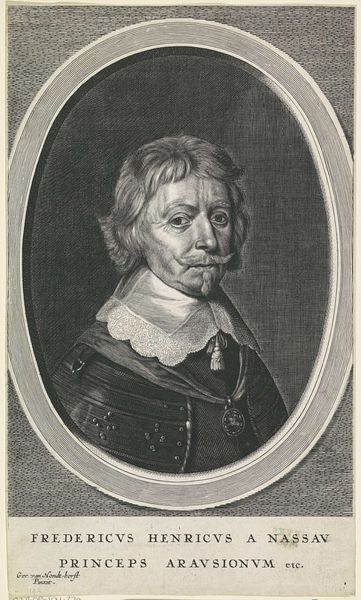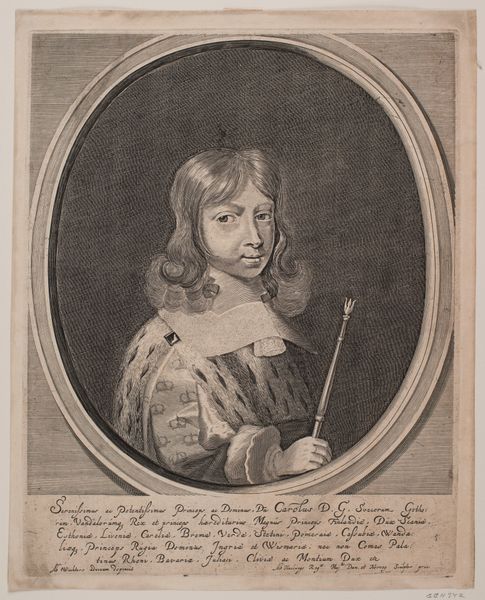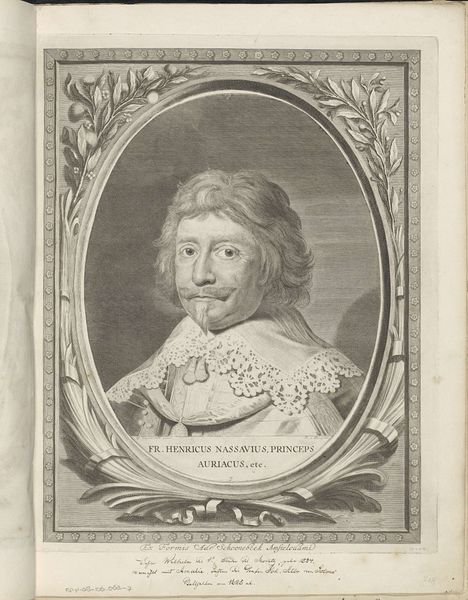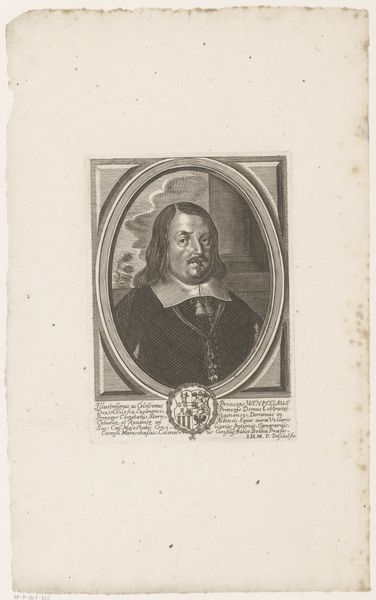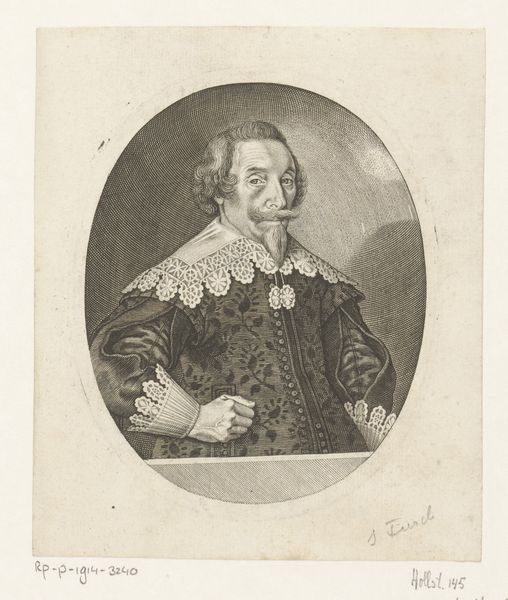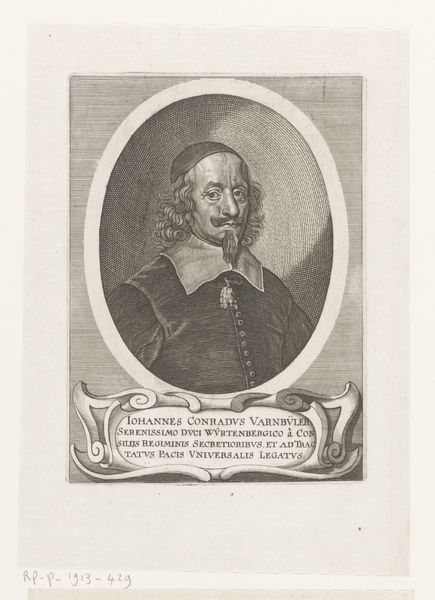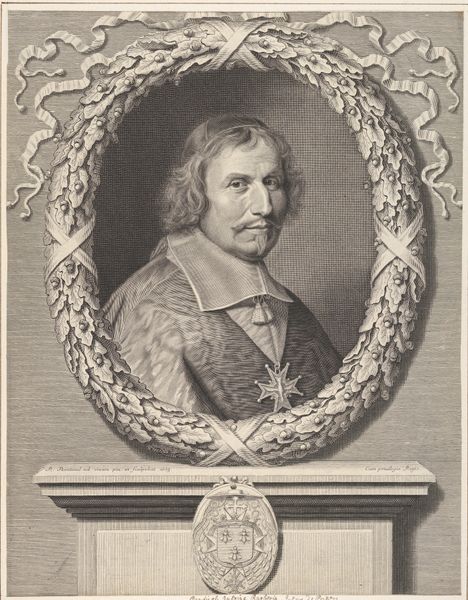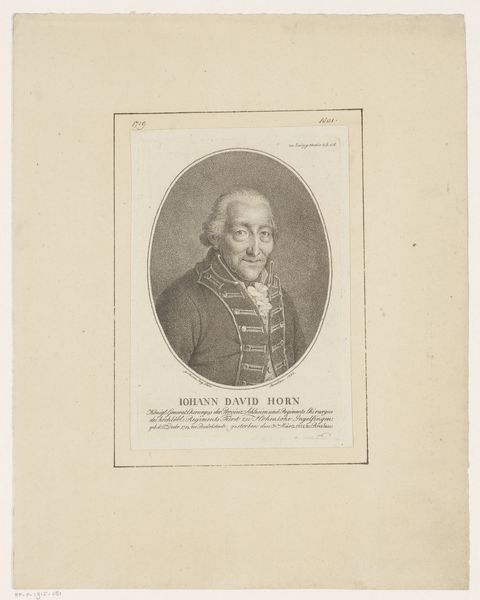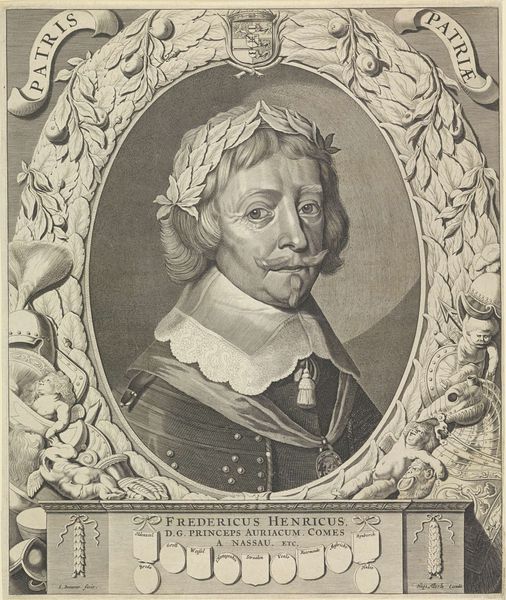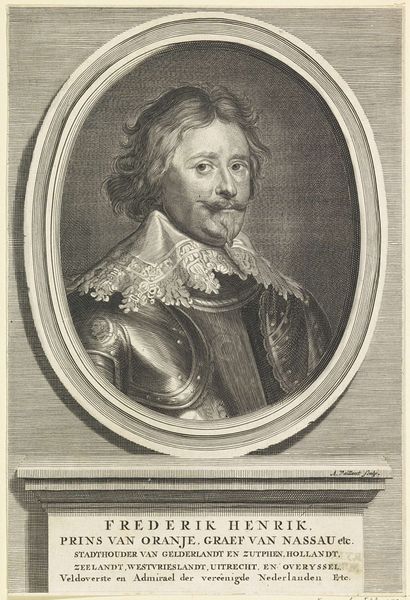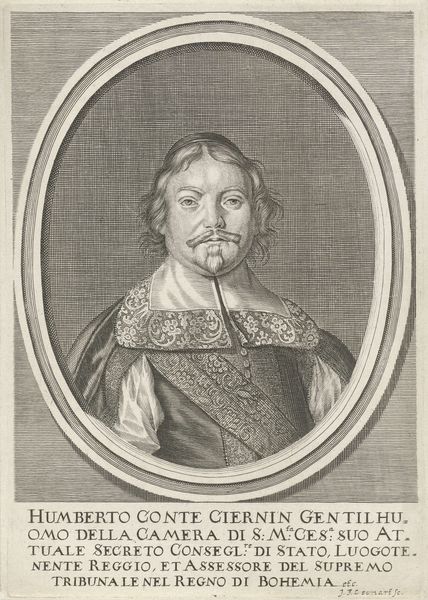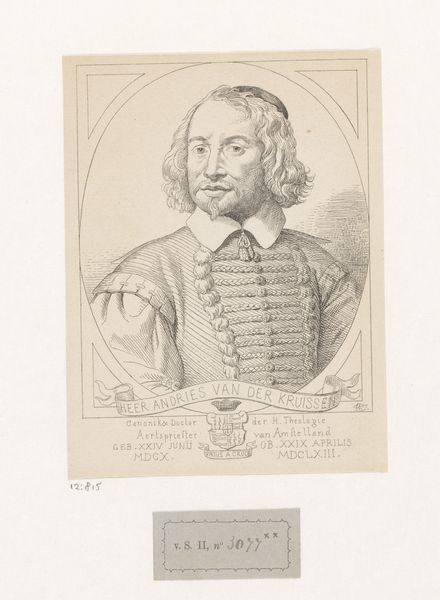
Frederick Henry, Prince of Orange, from Nine Portraits 1649
0:00
0:00
drawing, print, paper, engraving
#
portrait
#
drawing
#
aged paper
#
toned paper
#
baroque
# print
#
paper
#
engraving
Dimensions: 420 × 310 mm (image/ plate); 515 × 370 mm (sheet)
Copyright: Public Domain
Editor: This is a portrait of Frederick Henry, Prince of Orange, created by Cornelis Visscher in 1649. It’s an engraving, so printed on paper, and it has a somewhat aged look which gives it a lot of character, I think. How would you interpret this piece from a historical perspective? Curator: Well, first off, note how meticulously this print seeks to project authority. We see Frederick Henry framed within an oval, a conventional format, yes, but think about the public role of portraits like this. They were explicitly made and circulated to cement political power, reinforce his status, and perpetuate his image throughout society, far beyond his physical presence. The date is important here: 1649, right after the end of the Thirty Years' War, so he would have been a celebrated figure. Do you think this engraving accurately captures the Prince's likeness or does it more broadly depict the image of an ideal ruler? Editor: I think it's both. He looks every bit the part, especially with all that armor. Do you think that impacted how he was received by the public back then? Curator: Absolutely. Consider the intended audience. Engravings like this, multiplied and disseminated, shaped popular opinion, built a persona. What choices in the visual language are evident, can you pinpoint what conveys that? Editor: His steady gaze? He looks very dignified. The intricate detailing on the armor, medal and collar would underscore that. And that he's literally framed gives him even more authority. It's like he's literally set apart. Curator: Precisely. This piece gives us an understanding of the political machinery of imagery during the Baroque era. A powerful reminder of how art served – and continues to serve – powerful social forces. Editor: That gives me a whole new perspective. I had focused mostly on the aesthetic aspects, but I now realize this work functioned more broadly. Thank you!
Comments
No comments
Be the first to comment and join the conversation on the ultimate creative platform.
